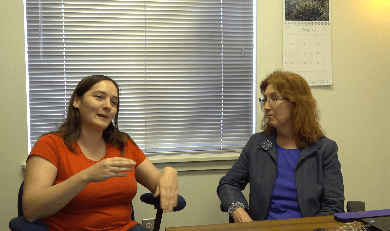883 Galaxies Far, Far Away
As long as humans have looked toward the stars, we have wondered what lies beyond our view. Patricia Henning, the associate vice president of research and a professor of physics and astronomy at the University of New Mexico, has taken a leading role in finding that answer.
Henning was part of a team of scientists from around the globe that discovered 883 new galaxies using the Commonwealth Scientific and Industrial Research Organisation’s (CSIRO) Parkes radio telescope. The group published the results in 2016.
“The Milky Way galaxy has a lot of stars, but also a lot of dust,” Henning said.
“Since the dust blocks everything beyond the disk of the Milky Way, this project used a radio telescope to see beyond the optical realm, deeper into the universe.”
The telescope, which is located in Australia, allows the radio waves to travel beyond the dust and gather data on the galaxies that otherwise couldn’t be seen. This typically obstructed area of the sky is particularly important because it helps to confirm a gravitational anomaly called the Great Attractor.
“The Great attractor is an enormous mass concentration predicted to exist by watching the ways that galaxies move,” Henning said.
“The problem was that there didn’t seem to be a lot of galaxies where it was predicted to be. We realized that nothing could be seen because of the dust, so using the radio telescope we discovered a lot of galaxies in the right place to be a part of the great attractor.”
To pinpoint the galaxies, Henning and a team of UNM graduate students split the data received from the telescope into cube sections. From there, the students analyzed the data looking for major spikes of radio waves, indicative of galaxies.

“The tricky part is that some man made signals like GPS look very similar in the data,” Henning said. “This means we have to scrutinize everything to make sure we have a galaxy. GPS is great for driving, but not so great for discovering galaxies.”
Henning wouldn’t keep all the fun for herself though. One of Henning’s graduate students, Monica Sanchez, is discovering galaxies of her own at UNM by using the Very Large Array, a radio astronomy observatory located in New Mexico.
Sanchez is working on the Cosmos H1 Large Extragalactic Survey (CHILES) project. CHILES is looking at one section of the sky for 1,000 hours to gain a better understanding of neutral hydrogen in the universe. Because of the long exposure time, the data will be able to show galaxies that date back 4.6-billion years.
While discovering galaxies may seem day to day for Henning and Sanchez, there is nothing ordinary about mapping the history of the universe.
“When I tell my friends at school that I discovered a new galaxy, they’re always really excited at first,” Sanchez said. “But after I get into the fine details, their eyes start to become glassy.”
While it may not all be easy to explain, a lot of work goes into huge scientific breakthroughs such as CSIRO’s Parkes project and CHILES. Both Henning and Sanchez highlighted the value that UNM has brought to these discoveries.
“Being a professor at UNM, I have the opportunity to work with diverse and intelligent students everyday. A huge part of what we do is teamwork, even though I have spent a career doing this, sometimes a student with fresh eyes will be able to see something that no one else has.” — Patricia Henning, the associate vice president of research and a professor of physics and astronomy.
After spending her undergraduate career at the University of Costa Rica, Sanchez also has a great respect for UNM.
“UNM has such a collaborative atmosphere,” Sanchez said. “There is always other students and professors willing to collaborate and help.”
Especially with the collaboration at UNM, Henning and Sanchez agreed that students should take every opportunity to build connections in the STEM community.
“Never be afraid to go up and shake someone’s hand,” Henning said. “Go to lectures that sound interesting and afterward, go up to the speaker and making that connection will benefit you in your career.”
Whether just starting to attend lectures, or discovering the hidden secrets of the universe, UNM welcomes all members of the community to engage with people in the STEM fields.
“UNM is so important to everything we do,” Henning said.
“UNM is great,” Sanchez said. “New Mexico is beautiful and the view of space isn’t too shabby either.”
